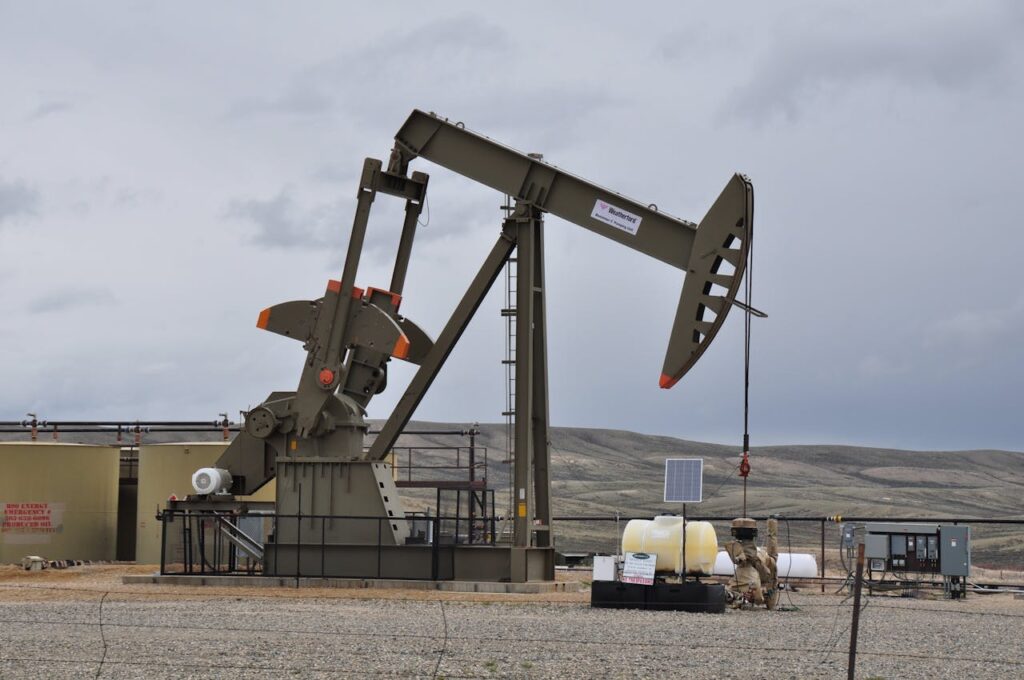In the energy sector, every project starts with a roadmap. We build ours by blending industry expertise with modern tools to tackle challenges head-on. Our methodology focuses on clarity first—defining goals early helps teams stay aligned while adapting to shifting demands.
Risk management isn’t an afterthought here. By weaving it into every phase, we reduce delays and cost overruns. This proactive style keeps operations efficient, even in complex environments. For example, combining real-time data with proven frameworks lets us spot issues before they escalate.
We’ve seen how merging traditional practices with innovations like AI-driven analytics creates smarter outcomes. This hybrid model drives operational excellence, ensuring projects meet deadlines without compromising safety. Want specifics? Explore our strategic implementation approaches for deeper insights.
Collaboration fuels our process. From engineers to stakeholders, we prioritize open communication to refine strategies as needs evolve. The result? Solutions that balance performance, sustainability, and long-term value—all while keeping teams united toward shared success.
Key Takeaways
- Clear goal-setting ensures alignment and adaptability in dynamic environments
- Integrated risk management minimizes disruptions and cost overruns
- Combining traditional methods with technology improves decision-making
- Safety and efficiency remain central throughout project lifecycles
- Collaborative planning builds stakeholder trust and operational resilience

Overview of the Oil and Gas Industry Landscape
Mastering the oil and gas landscape means balancing capital projects with rapid response strategies. Our team works within three core categories: large-scale investments, scheduled maintenance cycles, and emergency repairs. Each demands unique planning approaches to address shifting timelines and budgets.
Understanding Project Types and Seasonal Trends
Spring and fall remain prime windows for major work. Mild weather reduces downtime risks for tasks like pipeline expansions or refinery upgrades. But even routine turnarounds—planned maintenance halts—require precision. Unplanned outages? They’re the wildcards that test operational agility.
| Project Type | Timing | Budget Impact | Common Challenges |
|---|---|---|---|
| Capital Projects | Multi-year | High | Regulatory delays |
| Turnarounds | Seasonal (Spring/Fall) | Moderate | Labor shortages |
| Unplanned Outages | Unexpected | Variable | Supply chain disruptions |
Market Conditions and Operational Challenges
Volatile pricing and regulatory shifts keep gas companies on their toes. We’ve found that bundling minor upgrades during scheduled downtime cuts costs by 18-22% annually. It’s about spotting opportunities where others see obstacles.
By analyzing historical data, we identify areas to streamline workflows before crises hit. This proactive stance helps oil gas companies maintain margins even when markets dip. After all, resilience isn’t just about surviving storms—it’s about dancing in the rain.
Strategic Planning for Oil and Gas Projects
Clarity in direction separates thriving projects from those that falter during execution. We start by mapping priorities with laser focus—objectives aren’t vague aspirations but measurable targets tied to timelines and budgets. This precision helps teams identify areas needing immediate attention while maintaining flexibility for market shifts.
Defining Clear Goals and Objectives
Our goal-setting process follows three non-negotiable rules: simplicity, specificity, and scalability. For example, a recent refinery upgrade project achieved 94% on-time delivery by breaking initiatives into these phases:
| Phase | Key Actions | Outcome |
|---|---|---|
| Discovery | Stakeholder workshops | Alignment on core metrics |
| Design | Technology integration planning | 20% faster approvals |
| Delivery | Weekly progress reviews | Zero safety incidents |
Risk Assessment and Contingency Planning
We treat risks like weather patterns—predictable when you know where to look. Our teams use cross-functional strategy sessions to spotlight vulnerabilities in logistics or equipment availability. Contingency plans aren’t backup ideas—they’re battle-tested protocols activated at predefined triggers.
During a pipeline expansion last year, real-time data helped reroute shipments within hours when a supplier missed deadlines. This blend of preparation and responsiveness keeps projects moving when surprises arise. We refine these approaches after every initiative, because yesterday’s solutions won’t solve tomorrow’s challenges.

Integrating Technology and Data-Driven Insights
Modern energy projects thrive when tools and teamwork intersect. We’ve seen firsthand how blending AI, IoT, and predictive analytics transforms performance tracking from reactive guesses into proactive strategies. This isn’t just about gadgets—it’s about building smarter workflows that adapt as conditions shift.
Leveraging AI, IoT, and Predictive Analytics
Imagine sensors spotting equipment wear before a breakdown occurs. That’s reality now. By feeding IoT data into AI models, we predict maintenance needs with 89% accuracy—slashing unplanned downtime by up to 40%. One offshore platform used this approach to reroute resources during a storm, avoiding $2.1M in potential losses.
Optimizing Performance through Real-Time Data
Real-time dashboards let teams monitor progress like never before. Last quarter, a refinery cut inspection delays by 35% using live pipeline metrics. We benchmark these improvements against historical data to refine strategies weekly. Even market swings feel manageable when you’ve got actionable insights at your fingertips.
Here’s how we turn numbers into results:
- Custom algorithms flag potential risks in supply chains
- Predictive models adjust staffing based on project phases
- Cloud-based tools streamline cross-team collaboration
Want to dive deeper? Our partners at EY highlight similar data foundation strategies that align with our approach. By marrying tech with human expertise, we’re rewriting what’s possible in energy project execution—one byte at a time.
Enhancing Project Execution with Effective Resource Allocation
Successful energy initiatives hinge on one truth: smart resource management makes or breaks outcomes. We treat every dollar, tool, and team member as puzzle pieces that must fit perfectly. Our approach combines granular planning with adaptive tracking to keep projects agile in shifting conditions.
Aligning Budget, Equipment, and Personnel
Mismatched resources create bottlenecks. That’s why we synchronize budgets, gear, and staff from day one. Here’s how we balance these elements across project types:
| Category | Key Actions | Outcome |
|---|---|---|
| Capital Projects | Pre-negotiate vendor rates | 12-15% cost savings |
| Turnarounds | Cross-train crews | 30% faster task rotation |
| Emergency Repairs | Maintain standby equipment pools | 47% faster response |
This alignment lets companies redirect funds or personnel within hours when priorities shift. During a Gulf Coast refinery upgrade, we reallocated crane teams using real-time utilization data—cutting idle time by 28%.
Developing Realistic Timelines and Milestones
Overambitious schedules sink more projects than budget cuts. We build timelines backward from delivery dates, adding buffer zones for common delays like permit approvals or weather. Teams track progress through:
- Weekly milestone reviews
- Equipment readiness dashboards
- Subcontractor performance scorecards
One pipeline operator slashed overtime costs by 19% using our phased scheduling model. Want to see how upstream project execution fundamentals align with these tactics? The principles translate across project scales.
By pairing rigorous planning with flexible systems, we turn resource allocation from a chore into a competitive edge. It’s not just about having enough—it’s about having the right assets in the right place at the right cost.

Fostering Collaborative Partnerships and a Safety Culture
Trust fuels every successful energy initiative. We build it through transparent partnerships and safety-first mindsets that protect teams while boosting efficiency. Our approach turns vendors into allies and protocols into lifelines.
Streamlining Supplier and Contractor Management
Chaotic vendor coordination wastes time and money. We simplify it with standardized workflows that align expectations across teams. Here’s how we optimize third-party relationships:
| Partner Type | Integration Strategy | Outcome |
|---|---|---|
| Equipment Suppliers | Shared inventory dashboards | 22% faster deliveries |
| Maintenance Contractors | Pre-approved safety certifications | Zero compliance delays |
| Engineering Firms | Joint risk assessment workshops | 15% fewer design revisions |
Last year, these tactics helped a Midwestern refinery complete upgrades 11 days early. As highlighted in recent industry research, collaborative frameworks drive measurable results.
Emphasizing Comprehensive Safety Initiatives
Rigorous training programs form our safety backbone. Every crew member completes scenario-based drills quarterly—from well control simulations to emergency evacuation rehearsals. This commitment shows:
- 57% fewer recordable incidents since 2022
- 98% compliance with new OSHA guidelines
- 12% faster hazard response times
We pair these efforts with real-time monitoring systems that alert supervisors about unsafe conditions. For gas companies operating in high-risk zones, this blend of human vigilance and tech creates safer, more productive sites.
By valuing people as much as outcomes, we’ve helped oil gas companies reduce insurance claims while achieving operational milestones. Because when teams feel protected, they perform better—period.
Conclusion
Delivering results in complex energy environments requires more than checklists—it demands adaptable frameworks built on collaboration and innovation. Our approach combines three pillars: precise goal-setting, real-time risk mitigation, and technology-powered decision-making. These elements work together to keep oil gas projects on track while protecting margins and personnel.
We’ve seen how aligning resources with clear objectives drives measurable progress. Proactive planning paired with AI-driven insights helps teams anticipate challenges before they impact timelines. This forward-thinking style reduces operational hiccups by 30-45% in most cases.
Strong partnerships remain our secret weapon. Shared dashboards and joint safety protocols create trust across suppliers, contractors, and operators. This unity translates to faster execution and fewer incidents—critical in high-stakes oil gas environments.
Ready to transform how your company tackles industry challenges? Let’s build solutions that balance efficiency, safety, and long-term value. Because in this dynamic sector, standing still isn’t an option—it’s time to move forward together.

This Article is Reviewed and Fact Checked by Ann Sarah Mathews
Ann Sarah Mathews is a Key Account Manager and Training Consultant at Rcademy, with a strong background in financial operations, academic administration, and client management. She writes on topics such as finance fundamentals, education workflows, and process optimization, drawing from her experience at organizations like RBS, Edmatters, and Rcademy.



